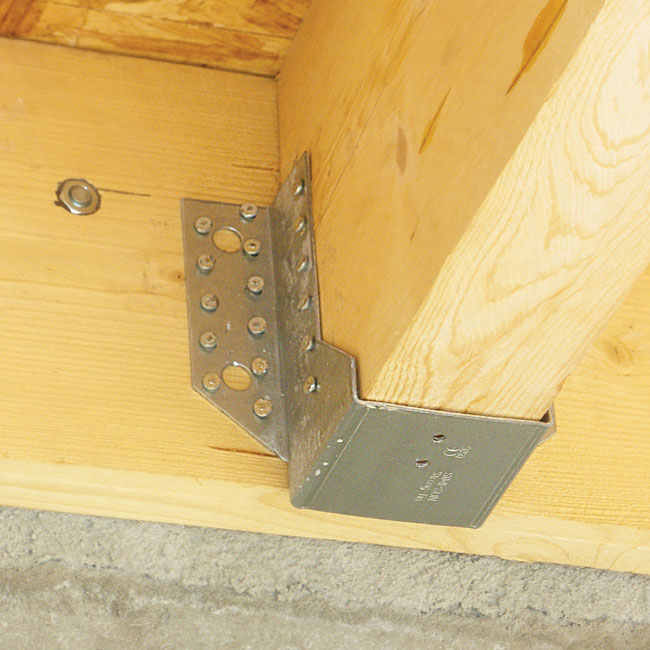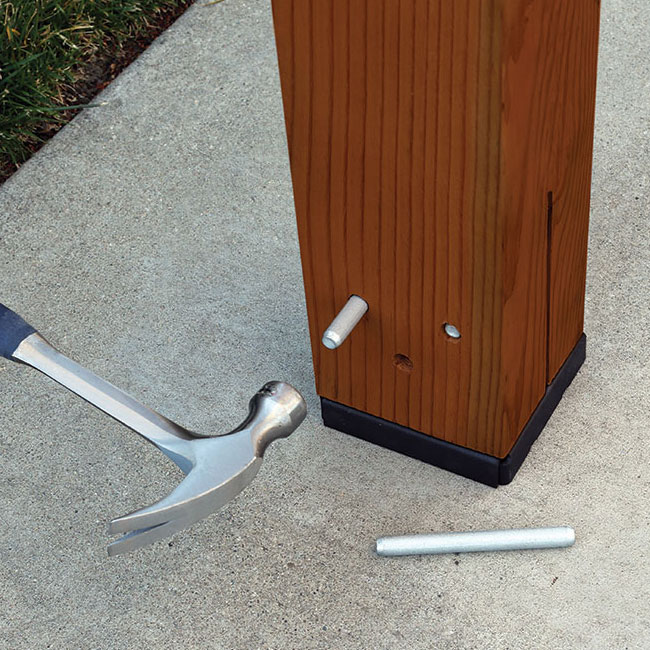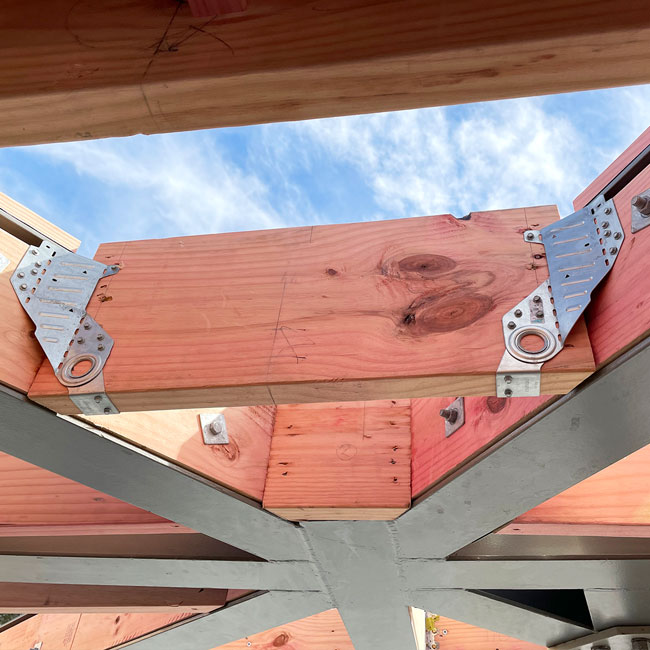Corrosion Guide for Fasteners
Guidelines for Selecting Corrosion-Resistant Fasteners
| APPLICATIIONS | GUIDELINES |
|---|---|
|
Evaluate the Application |
Consider the importance of the connection. |
|
Evaluate the Integrated Environment |
Consider these moisture and treatment integrated environments. |
| Dry service |
Generally INTERNAL applications include roof and wall cavities, raised floor applications in enclosed buildings that have been designed to prevent condensation and exposure to sources of moisture. |
| Wet Service |
Generally EXTERNAL construction in conditions other than elevated service. These include applications that are external sheltered and exposed and general-use ground contact. |
|
Elevated Service |
Includes air pollutants, fertilisers, soil, some preservative treated timber, industrial fumes, acid rain, and other corrosive elements in dry and wet service environments. |
|
Marine/Coastal/Tropical |
Marine environments that include direct exposure and exterior sheltered exposure to ocean salinity, salt water splash, and elevated moisture due to air or ground moisture. |
|
Uncertain |
Unknown exposure, materials, treatment chemicals, or corrosion effects of timber. |
|
Treatment Chemicals |
See AS 1604 and Timber Preservers Association of Australia and other related organisations for treatment practices and chemicals. The preservative-treated timber supplier should provide all of the pertinent information about the treated timber being used. The information should include timber treatment chemical and chemical retention. See related chemical product literature for corrosion effects of treatment chemicals and fastener corrosion resistance recommendations. |
Use the Simpson Strong‑Tie® Corrosion Classification Table
If the treatment chemical information is incomplete, Simpson Strong‑Tie recommends the use of a 300 series stainless steel product. Also if the treatment chemical is not shown in the Corrosion Classification Table, then Simpson Strong‑Tie has not evaluated it and cannot make any recommendations other than the use of coatings and materials in the Severe category. Manufacturers may independently provide test results of other product information; Simpson Strong‑Tie expresses no opinion regarding such information.
Choose the Right Level of Corrosion Protection
Simpson Strong‑Tie® fasteners feature a wide range of materials and coatings designed to meet specific performance criteria. It is important to select a material and/or coating that is suitable for the intended application and environment based upon factors such as corrosion resistance and mechanical properties of the material.
Simpson Strong‑Tie® Company Inc. welcomes the opportunity to provide assistance in fastener selection. Please call your Simpson Strong‑Tie Representative in the event that technical support is needed.
Finish/Material
Description

Clear Zinc
Electroplated Clear Zinc is applied in accordance with ASTM F1941. In the ASTM B117 salt spray test, Clear Zinc provides 12 to 24 hours of corrosion protection before the first appearance of red rust depending on coating thickness.
Electrocoating (E-CoatTM)
Electrocoat utilises electrical current to deposit the coating material onto the fastener. After application, the coating is oven cured. Electrocoat is intended for dry, low corrosion applications.
Yellow Zinc
Electroplated zinc applied in accordance with ASTM F1941. In the ASTM B117 salt spray test, Yellow Zinc provides at least 24 hours of corrosion protection before the first appearance of red rust.
Type 410 Stainless Steel
Type 410 stainless steel is a low-carbon martensitic grade of stainless steel that can be hardened and is inherently magnetic. This material provides corrosion resistance in mild atmospheres and many mild chemical environments.
Coated Zinc
This coating system consists of an electroplated zinc base layer with an E-CoatTM top coat. It provides corrosion resistance that is adequate for low corrosion environments. In ASTM B117 salt spray testing at 500 hours of exposure, fasteners with this coating have an average red rust of less than 5%.

Quik Guard® Coating
Quik Guard is a proprietary coating that consists of an electroplated zinc base layer and a system of organic top coats. It provides corrosion resistance equivalent to hot-dip galvanisation (ASTM A153, Class D) in some exposures. In ASTM B117 salt spray testing at 1000 hours of exposure, fasteners with the Quik Guard coating have average red rust less than 2%.
Double-Barrier Coating
The Simpson Strong‑Tie® Double Barrier coating is a proprietary coating that provides a level of corrosion resistance that is equivalent to hot-dip galvanisation (ASTM A153, Class D) in most non-marine environments.
Class D Hot-Dip Galvanised
ASTM A153
The Class D hot-dip galvanisation is a coating that meets the requirements of ASTM A153, Class D, which is a minimum average of 1.0 oz/ft2 [305 g/m2] of zinc applied by a hot-dip process. Hot-dip galvanised fasteners are compliant with the 2015 and 2018 IBC and IRC.
C-3 Mechanically Galvanised
A mechanically-applied coating that is zinc with a minimum of 20% tin in accordance with Australian Standard AS3566.2. In the ASTM B117 salt spray test at 1,000 hours of exposure, fasteners with the C3 coating exhibit average red rust of less than 2%.

Types 304 and 305 Stainless Steel
Types 304 and 305 stainless steels are nickel-chromium austenitic grades of stainless steel. Types 304 and 305 stainless steels are not hardened by heat treatment and are inherently non-magnetic. They provide very good corrosion resistance and are suitable for use in many corrosive environments. Fasteners made from Types 304 and 305 stainless steels are compliant with the 2012 and 2015 IBC and IRC.

Type 316 Stainless Steel
Type 316 stainless steel is a nickel-chromium austenitic grade of stainless steel with 2–3% Molybdenum. Type 316 stainless steel is not hardened by heat treatment and is inherently non-magnetic. It provides a level of corrosion protection suitable for severe environments, especially environments with chlorides. Type 316 stainless steel fasteners are compliant with the 2012 and 2015 IBC and IRC.
Class C, Hot-Dip Galvanised, ASTM A153
Class C hot-dip galvanisation is a coating that meets the requirements of ASTM A153, Class C, which is a minimum average of 1.25 oz/ft2 [381 g/m2] of zinc applied by a hot-dip process. Hot-dip galvanised fasteners are compliant with the 2015 and 2018 IBC and IRC.
Structural Connections

Unmatched Quality from the Truss to the Foundation
With nearly 60 years of field and R&D experience, Simpson Strong-Tie® timber connectors are manufactured to the industry's highest standards. From framing angles to straps to heavy-duty joist hangers, we offer the most diverse product line so that you have the right product for the job.
Simpson Strong-Tie® connectors offer unmatched quality with laboratory and field testing, and are backed by our uncompromising commitment to customer service. As the company that built the connector industry, you can count on Simpson Strong-Tie® to work closely with builders, engineers and building officials to deliver innovative, building code-compliant solutions to help build safer, stronger structures economically. Download the Timber Connectors NZS 3604 Catalogue.
Timber Connectors
From testing to service to availability, everything we do is engineered to ensure your project's success. With every product, you know you are getting the quality, value, service and on-time delivery that we have built our reputation on for the past 60 years.
From straps and ties to joist hangers and much more, Simpson Strong-Tie® structural connectors increase the strength and safety of timber-frame structures. Each connector is unique to Simpson Strong-Tie and is designed for specific applications without the need to adapt metal plating to suit a connection. Download the Engineered Structural Connectoions flyer.
Steel Frame Connectors
From fully tested and engineered connectors and clips Simpson Strong-Tie® provides comprehensive structural solutions for cold-formed steel construction. From steel-to-steel connections to full-scale lateral solutions and curtain wall connectors, we remain committed to developing new technology that helps to advance the cold-formed steel industry.
Find out how Simpson Strong-Tie timber connectors can help you build the right way every day. Download the Cold-Fromed Steel Construction Connectors Catalogue.


